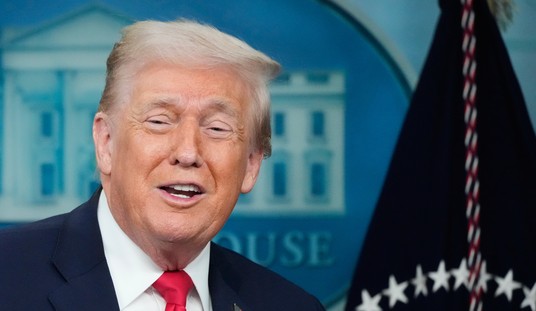Energy Secretary Stephen Chu testified before Congress yesterday on the $535 million debacle of the Solyndra collapse, and needless to say, didn’t impress too many people. He took responsibility for the decision to approve the loan guarantees, but claimed he had no idea how shaky Solyndra was, nor the solar industry in general — two points one might think that a loan guarantor would check before handing over so much cash. (Hey, if it’s not your money, then why worry, right?) Chu also pushed the claim that the Obama administration’s green-tech stimulus would employ 60,000 people and “displace” 300 million gallons of gasoline annually.
The Washington Post’s Glenn Kessler fact-checked Chu on those claims and Chu’s claims of ignorance, and says both are a lot of hooey:
In any case, the job number and the fuel number are greatly inflated by the inclusion of the loan to Ford. As we have demonstrated, these are not new jobs or even saved jobs — just people who might, just maybe, have a little more job security, in part because of the loan.
Chu’s comments on the unexpected “tsunami” that hit Solyndra are also troubling. The OMB e-mail shows that at least one arm of the government was aware that Wall Street was quickly souring on solar energy and that the tsunami that swept the industry should not have been such a surprise.
He gives Chu three Pinocchios for fibbing, but if you read the whole article — which I strongly recommend — you won’t ask “Why?” You’ll ask, “Why not a dozen or more?”
Let’s start with the idea that the solar industry collapse came as a shock to the White House. Clearly, Chu shares one habit with his colleague at the Department of Justice, Eric Holder, in that he doesn’t bother to read memos and analysis from internal analysts. Kessler includes a memo from the OMB in August 2009, in which the White House’s budget office warns the DoE that the bottom is about to fall out from under the solar-tech industry:
One article mentioned in the e-mail noted that prices had already dropped 40 percent since the middle of the previous year, and “many experts expect panel prices to fall further, though not by another 40 percent.” (It did.)
Another article cited in the e-mail noted both the spurt in Chinese production and the softening of demand in Europe. As it happened, those are two factors that Chu cited in his testimony as causing the unexpected price decline: “There was a large production ramping up, namely in China,” he said. “And secondly there was a softening of the market in Europe.”
One reason for the “softening” of demand in Europe was the collapse of the Spanish subsidy system for green jobs. Demand for product got artificially inflated when Spain went on a green-jobs spending binge, only to discover that (a) the technology wouldn’t support cost-efficient mass production of energy, and (b) the spending was killing a little over two jobs for every one created. Thanks to that failure and others in Europe, the demand dropped for solar just as China ramped up its production, itself propped up by subsidies and cheap labor. More than two years ago, OMB saw the writing on the wall, and yet Chu pressed ahead with his approvals on green-tech loans.
On the jobs claim, Kessler references a Post report from two months ago that exposed the false claims of job creation by the White House, which we also linked at the time:
The Energy Department says that the green-jobs program is still on track to meet its employment goals. It claims credit for saving 33,000 jobs at Ford Motor Co. — about half of the Detroit automaker’s entire hourly and salaried U.S. workforce. The department says the biggest of its loan guarantees, for $5.9 billion, protected the jobs at Ford by enabling the automaker to upgrade plants in five states to build more energy-efficient vehicles. The Energy Department said the loan would “convert” the Ford jobs to “green manufacturing jobs.” …
A Ford spokeswoman said the loans helped “transform what were primarily truck/SUV plants into flexible manufacturing plants capable of building more fuel-efficient vehicles.” That flexibility is key to “helping retain the 33,000 jobs by ensuring our employees can build the fuel-efficient cars people want to drive,” said Meghan Keck, who handles government relations for Ford.
Mark Muro, a Brookings Institution fellow who researches the clean-tech industry, said the agency appears to be counting every employee working in upgraded plants, when the more relevant question is how many workers would have been laid off without the loans.
Basically, the logic behind this claim is that the DoE loaned Ford some cash to make more energy-efficient vehicles, and so every worker there can now be counted as holding a “green job” saved by the stimulus spending. That’s about as dishonest a claim that can be made under oath without putting one’s self in jeopardy of a perjury prosecution.
Three Pinocchios hardly seems adequate to describe Chu’s testimony yesterday.









Join the conversation as a VIP Member